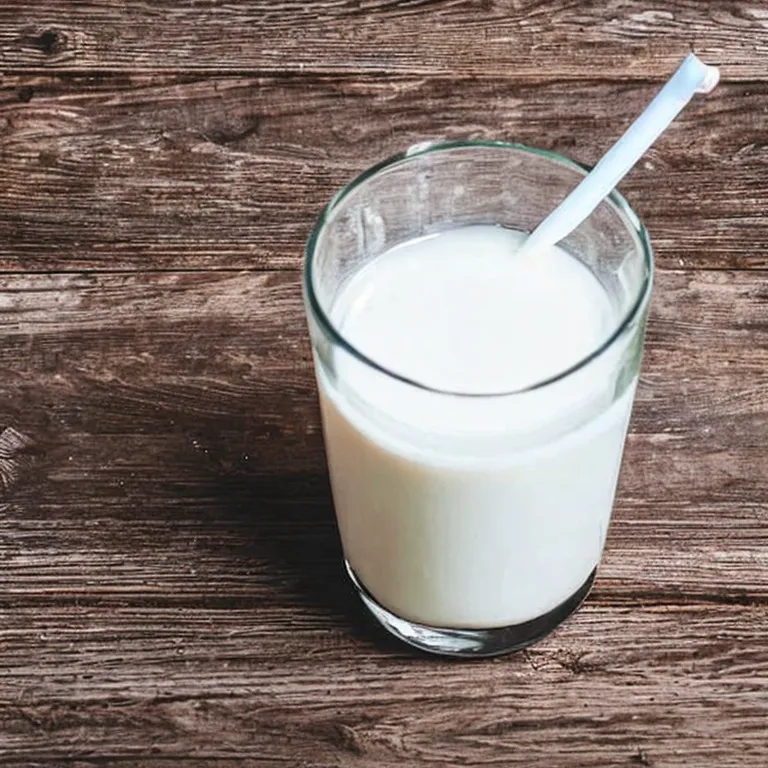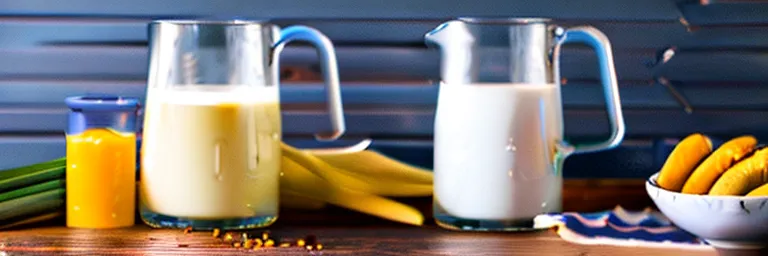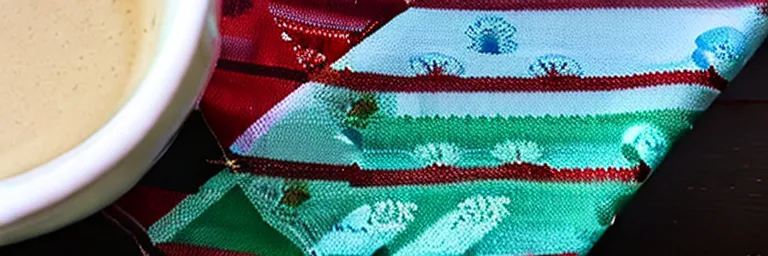A comprehensive guide to navigating milk intolerance in babies and toddlers

This blog post will provide Toddler Recipes Australia readers with a comprehensive guide to navigating milk intolerance in babies and toddlers. Parents with children who have milk intolerance issues will benefit from this article which includes advice and tips on preparing meals, snacks and drinks that are dairy-free, low in lactose and nutritious. With the help of this resource, parents can make informed decisions on the best diet choices for their children.
Introduction
Do you suspect that your baby or toddler may be suffering from milk intolerance? Do you find yourself obsessively poring over food labels and menus? Don’t worry, you’re not alone! Navigating milk intolerance in babies and toddlers can be an uphill battle, but I’m here to help make things easier.
I’m Susan, a stay-at-home mum of two. With a background in professional cooking, I specialize in western cuisine. I understand the importance of providing my children with fresh, healthy meals, but I’m also aware of the challenges that come with trying to give them a balanced diet when they have certain food intolerances. So, I’m here to help you through this journey!
In this comprehensive guide, I’ll be discussing:
- What is milk intolerance
- The most common symptoms of milk intolerance in babies and toddlers
- How can you tell if your child has milk intolerance
- The importance of consulting with a doctor
- Dietary alternatives for infants and toddlers with milk intolerance
Let’s get started!

Getting to Know Milk Intolerance
As a stay-at-home mom, I understand the frustration of wanting to give your child the nutrition they need while also keeping them happy. For picky eaters especially when it comes to milk, this can be difficult. Milk intolerance is a common but often misunderstood condition that can make feeding your little one a challenge. Understanding the basics of milk intolerance can help parents navigate it and make sure that their toddler gets all the necessary nutrients even when milk is a no-go.
First, let’s talk about what milk intolerance is and what form it usually comes in for toddlers. While both children and adults can suffer from milk intolerance, it’s more common in toddlers, who often experience lactose intolerance. This type of milk intolerance means that the body cannot digest milk properly, leading to side effects like bloating, cramping, and diarrhea.
It’s important to note that lactose intolerance is different from other types of dairy allergies, which can be much more serious. In some cases, children may be allergic to a specific protein in cow’s milk, which will require a more careful approach. If your child is exhibiting signs of a dairy allergy, it’s best to speak with your doctor for proper diagnosis and treatment.
On the other hand, lactose intolerance can often be managed with proper care. The good news is that there are plenty of dairy-free options available that can provide the necessary nutrition for your toddler. In the next section, we’ll discuss how to identify the best dairy-free options for your toddler.
Introduction to Milk Intolerance
Milk intolerance is a common condition among babies and toddlers, which can cause a range of unpleasant symptoms. As a stay-at-home mom of two picky eaters, I understand that trying to find suitable options for your little one can be overwhelming.
I know from firsthand experience that a lack of knowledge, education and resources can cause some parents to feel helpless and frustrated. That’s why I’m here to help! This detailed guide will provide you with information about milk intolerance and how it can be navigated, as well as delicious and easy recipes specially designed for milk-intolerant children.
In this guide, you’ll learn the basics of milk intolerance and its potential effects, as well as what changes can be made to meals in order to accommodate milk-free diets. With this new perspective, you’ll be able to make mealtime enjoyable (and edible!) again!

2) Causes of Milk Intolerance
If your baby or toddler is showing milk intolerance symptoms, it is essential you identify the cause. Here are some of the most common milk intolerance causes:
-
Lactose Intolerance: The most common cause of milk intolerance, lactose intolerance occurs when your baby or toddler cannot digest the milk sugar, lactose. Symptoms associated with lactose intolerance include vomiting, stomach cramps and diarrhoea.
-
Allergies: A disruption in the immune system can sometimes cause an allergic reaction to proteins in cow’s milk. This is known as cow’s milk protein allergy. Symptoms usually appear shortly after consumption and can range from vomiting, diarrhoea, eczema, hives and even skin swellings.
-
Intestinal Disorders: Disorders such as Celiac Disease, Crohn’s Disease and Colitis can cause inflammation in the intestines, making it difficult for your child to digest milk proteins.
By understanding the cause of your child’s milk intolerance, you can then tailor their diet accordingly to ensure that it meets all their nutritional needs. If you have any doubts about any of the causes mentioned, it is best to consult a doctor for advice.

3) How Parents Can Help Diagnose Milk Intolerance
As parents, understanding the food sensitivities and allergies of our children is always a priority - as it can have a great impact on their health and wellbeing.
When it comes to milk intolerance, there are a few ways to determine if your baby or toddler is having a reaction.
First of all, pay attention to any major changes in behaviour. Babies and toddlers who are having an allergic reaction to milk might exhibit signs such as irritated skin, itching, rash, vomiting and diarrhoea. If these changes are persistent, it could be a sign of an allergy.
It is also important to have them tested in case the symptoms are not readily apparent. The skin prick test is the most common method used to identify allergies and intolerance. It is a non-invasive procedure that helps determine which proteins in the food are causing the allergic reaction.
It is also very important to keep a food diary for your baby and toddler. This will help you and your paediatrician weed out potential causes of the reaction. Record meals, snacks and beverages that were ingested, and how the child reacted after consuming them. This will help determine any potential irritants or allergens and help you and your doctor make the correct diagnosis.
Finally, pay attention to existing food allergies. If your baby or toddler has already been diagnosed with a particular food allergy, chances are they are more likely to be allergic to foods in the same family. For example, if your baby is allergic to peanuts, it is possible that they may also be allergic to other types of nuts as well.
By monitoring your baby or toddler’s lifestyle and diet, as well as keeping a food diary and having them tested, you can help to identify any allergies or intolerances early on, allowing you to make informed decisions about their diet and health.

4) Managing Milk Intolerance in Babies and Toddlers
Milk is a major component of a toddler’s diet, and managing milk intolerance can be difficult, but possible. Use the following tips to help your toddler manage milk sensitivities:
-
Talk to your doctor: Talk to your pediatrician or health care team about milk intolerance to discuss possible dietary changes or treatments.
-
Consider a mild substitution: Substitute milk for soy milk, almond milk, nut milk, or other mild milk substitutes.
-
Look for milk substitutes in recipes: Look for recipes that are designed for milk-free diets, and try substituting mild milk substitutes for recipes that call for milk.
-
Try lactose-free milk: If your child isn’t willing to try a mild milk substitute, try using lactose-free milk. Lactose-free milk has been specifically processed to remove the lactose, which is the sugar found in milk that some children are sensitive to.
-
Choose foods with less milk: Certain foods, such as yoghurt, cheese and ice-cream, are made with milk and can be a source of milk intolerance. Choose milk-free snacks, such as fruits and vegetables, rice cakes, and nut butters.
By following these tips, you can help your toddler manage milk intolerances while still enjoying tasty and nutritious foods.
If you’re looking for milk-free recipes to try, Toddler Recipes Australia has a selection of milk-free recipes that are delicious and simple!

5) Tips for Replacing Dairy Products and Dairy-Intolerant Recipes
Navigating milk intolerance in babies and toddlers can be complicated and challenging but with careful meal planning and replacing of dairy-based products with non-dairy alternatives, it is possible to provide nutritious, delicious meals. Here are a few tips on replacing dairy and creating dairy-intolerant recipes.
Replacing Dairy Products
-
Use non-dairy milks such as almond, oat, rice, and coconut milk for cereals, baked goods, or other recipes that call for milk.
-
Use non-dairy butter substitutes such as coconut oil or vegan margarine.
-
Replace cheese in recipes with vegan varieties.
-
Replace cream and sour cream with coconut cream or vegan sour cream.
-
Use mashed avocado for a dairy-free substitute for ricotta and cream cheese.
Dairy-Intolerant Recipes
-
Try grain-free meals like cauliflower rice and stir-fries.
-
Bake deliciously tender oat flour pancakes and waffles that are dairy-free.
-
Make veggie-packed frittatas and quiches with dairy-free ingredients.
-
Experiment with dairy-free smoothies with bananas, nut butters and fresh fruits.
-
Try tofu scrambles and tofu burgers as great dairy-free alternatives.
With a little bit of creativity and fabulous dairy-free ingredients you can make tasty, nutritious dairy-intolerant dishes that everyone in the family will love!

6) Recommended Dairy-Free Resources for Parents and Caregivers
As a parent or caregiver trying to navigate the world of milk intolerance in babies and toddlers, it can be helpful to have access to a variety of resources. To make your journey a little easier, here are some recommended dairy-free resources designed specifically for parents and caregivers.
-
Veganuary: Veganuary offers an array of dairy-free recipes, meal plans and helpful tips to help you plan your journey to veganism. It’s an ideal place to start if you’re looking for an overall guide to plant-based living.
-
Milk Allergy Mom: Milk Allergy Mom provides an extensive bank of information, recipes and product recommendations to help parents and caregivers navigate food allergies in children. Plus, their weekly webinars cover a range of topics from food allergy labeling to allergy-free back to school advice.
-
Healthy Versions of your Favorite Comfort Foods: You don’t have to give up the joys of your favorite comfort foods to be dairy-free. Healthline has compiled a list of vegan versions of your favorite comfort dishes, ranging from mac and cheese to mashed potatoes.
-
The Dairy-Free & Gluten Free Kitchen: Not all milk intolerances are the same, and some can overlap with other food sensitivities, such as gluten. Written by a Registered Holistic Nutritionist, The Dairy-Free & Gluten-Free Kitchen offers creative recipes designed to suit different allergies.
-
The Allergy & Co: Families dealing with food allergies will find solace and support in The Allergy & Co. They offer private nutritionist consultations as well as simple, delicious recipes for all types of allergies.
We hope you find the above resources useful for navigating milk intolerance in babies and toddlers. For even more information, be sure to check out our other articles and recipes on the Toddler Recipes Australia.

7) Final Considerations for Parents with Milk-Intolerant Children
Being a parent of a milk-intolerant child can be incredibly stressful, but it’s important to remember that there are strategies and diets available to help manage their milk intolerance.
Working closely with your pediatrician and an experienced dietitian who specializes in managing milk allergies can help you craft a diet that is both nutritious and enjoyable for your child.
Above all, it is essential for parents to stay informed and keep an eye out for any changes or new treatments that could help their child. Investing in specialized kitchenware, snack alternatives and pantry items can also make things easier, but don’t forget that snacks don’t have to be complicated. Plain toast, fresh fruit and veggies, or homemade treats are all great snack choices.
With the right tools and a little creativity, milk-intolerance can be managed for both children and parents alike.

 Never miss a recipe from us, subscribe to our newsletter
Never miss a recipe from us, subscribe to our newsletter